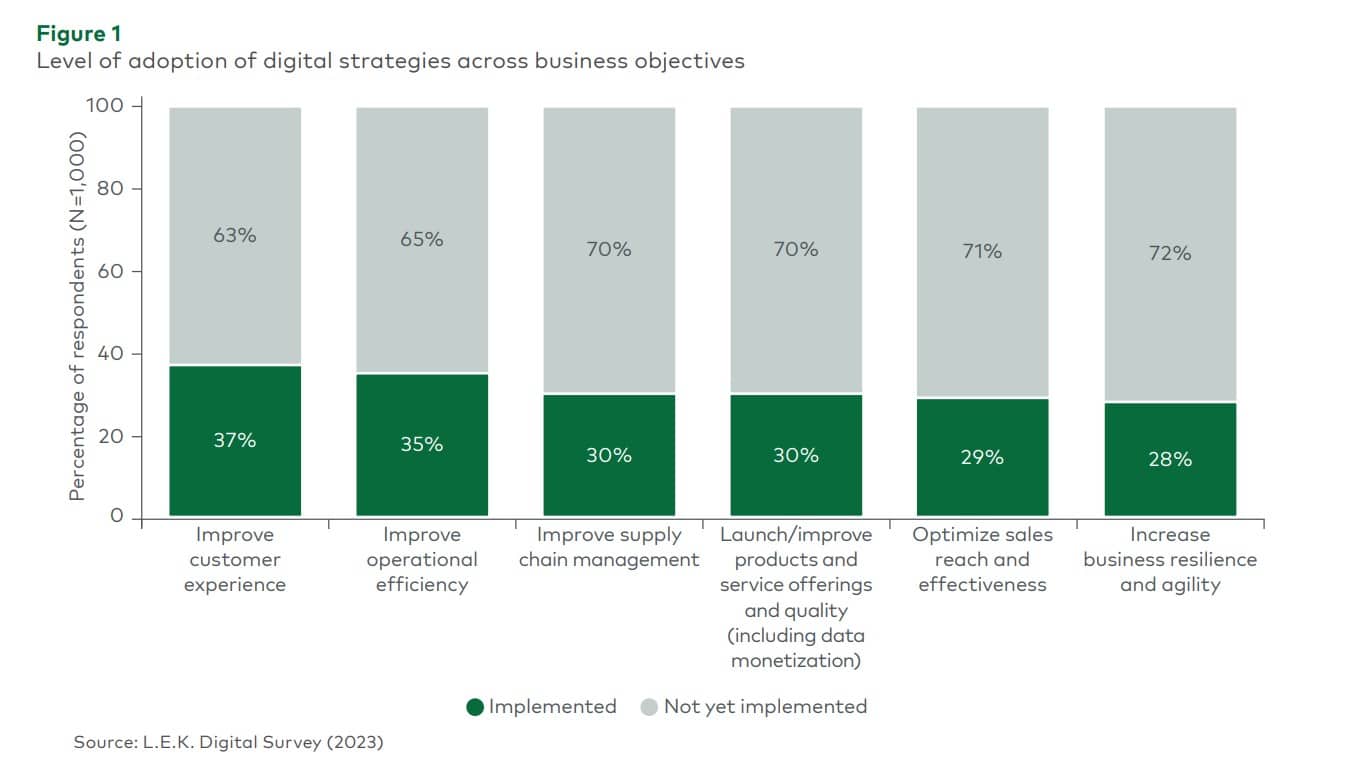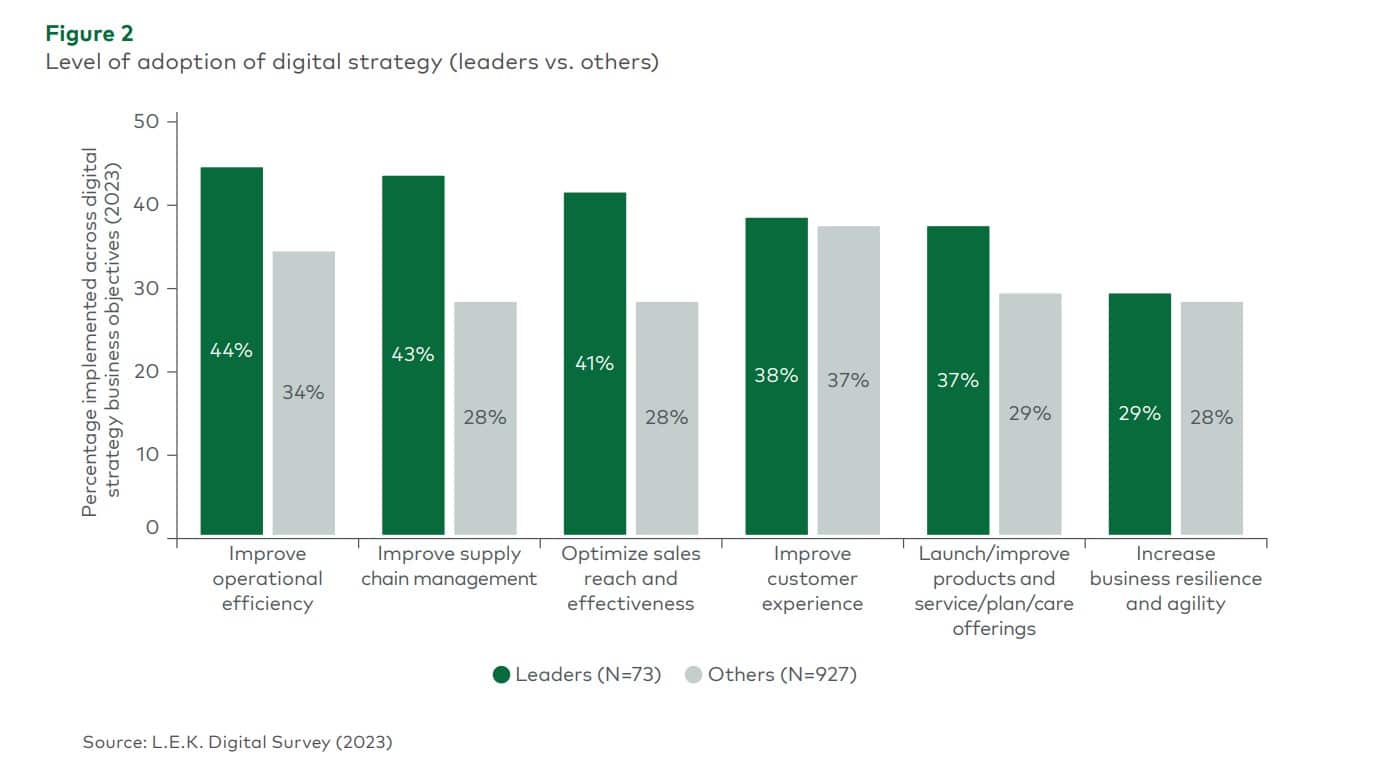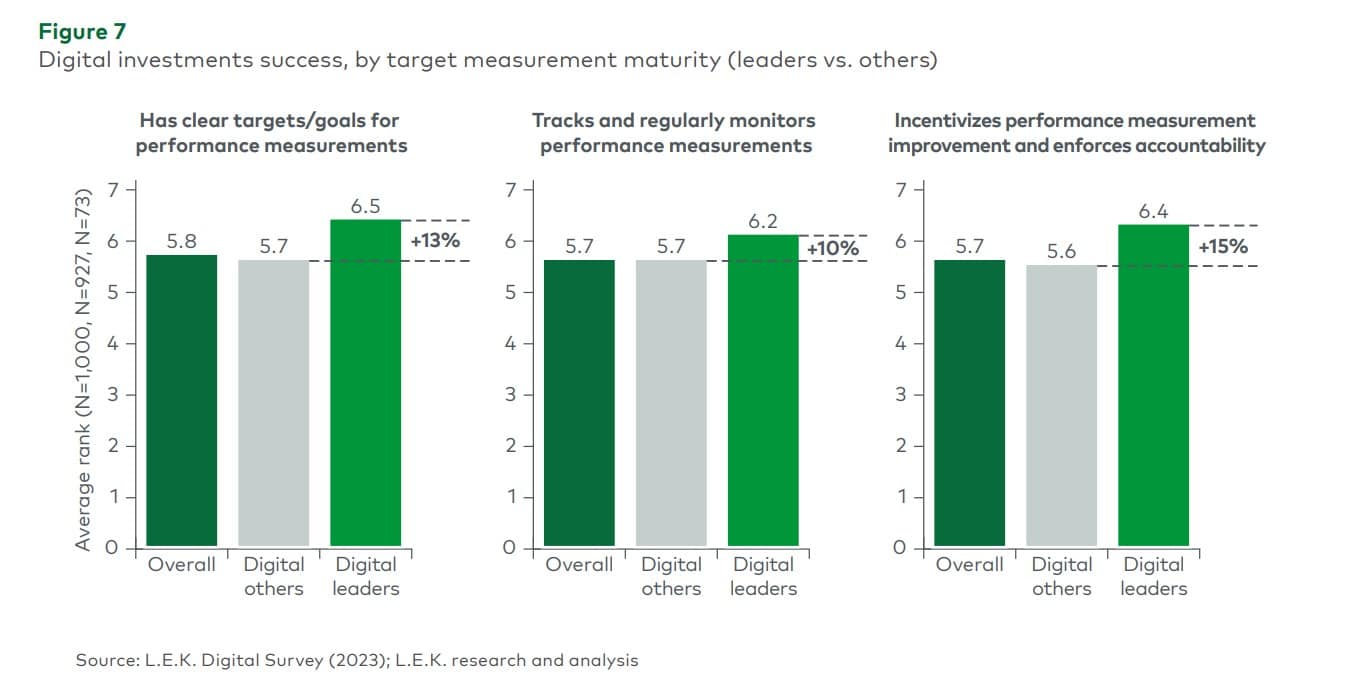The lure of AI is hard to resist, even for businesses that don’t have a clear plan for using it. The plan for many seems to be “buy it, deploy it, then figure it out along the way.” But the top performers are doing it differently—they are spending on their most critical business priorities and building technology solutions, such as AI-driven decision-making, advanced cybersecurity, supply chain management and customer experience systems, that stretch across the whole organization and support its biggest strategic goals. They are also making digital a top boardroom priority—e.g., “figure out what we need, then buy it,”
New research from global strategy consulting firm L.E.K. Consulting finds this more discretionary approach may give them a lasting competitive advantage over businesses that are still taking a traditional approach—investing in technology for siloed functions like manufacturing or human resources.

The firm’s 2023 Enterprise Digital Impact Study, based on execution of hundreds of projects, interviews, and a survey of 1,000 U.S. executives across multiple industry sectors, shows that businesses that perform best according to their self-determined measurements set different and fundamentally more strategic priorities when they plan and execute digital investments.
“What sets top performers apart is that they are moving beyond digitizing the work they already do and instead are harnessing digital solutions as a powerful vehicle for future growth,” said Darren Perry, managing director and partner in L.E.K. Consulting’s Digital practice, in a news release. “They are rethinking how they go to market, they are building AI-driven products, and they are using digital technology to create entirely new markets.”
“When digital leaders think about technology, they are thinking about how to interconnect solutions across functions to support business investments. They are coordinating their technology investments at the highest level of the organization,” said Chuck Reynolds, managing director and partner in the firm’s Digital practice, in the release.

Among the study’s key findings:
Top performers focus digital strategy on growth and impact
Executives from top-performing organizations were more likely than others to report they have adopted digital strategies designed to drive growth and increase organization-wide impact and effectiveness. Among the areas of focus: improving organizational efficiency (44 percent for leaders vs. 34 percent for others), improving supply chain management (43 percent vs. 28 percent), optimizing sales reach and effectiveness (41 percent vs. 28 percent) and launching improved products and service offerings (37 percent vs. 29 percent).
Top performers make it a priority to invest in solutions that drive core business objectives
Asked which investments were most important on a scale from 1 (least important) to 5 (extremely important), executives from top-performing organizations gave highest marks to foundational technologies that drive advancements across the business, including cybersecurity (averaging 4.5 vs. 3.5), enterprise-wide data and productivity applications (4.5 vs. 3.5), advanced analytics (4.5 vs 3.0) and agile ways of working (4.0 vs. 3.0). They also gave highest marks to “digital enablers” that give a business more advanced capabilities or make it more competitive—these include AI in general (4.5 vs. 3.5) and generative AI (4.0 vs. 3.0), customer data solutions (5.0 vs. 4.0), the Internet of Things (4.5 vs. 3.5), robotics (4.0 vs. 3.0), blockchain (4.0 vs. 3.0) and digital simulations (4.0 vs. 2.5).

Their programs are paying off
Top performers were dramatically more likely than others to report their digital investments were successful or highly successful—rating a 6 or 7 on a scale of 1-7—at launching or improving products or services (95 percent vs 54 percent), improving supply chain management (94 percent vs. 62 percent), optimizing sales reach and effectiveness (94 percent vs. 58 percent), increasing business resilience and efficiency (91 percent vs 57 percent), improving operational efficiency (81 percent vs. 63 percent) and improving customer experience (79 percent vs. 62 percent).
They are making digital technology a boardroom priority
While a large number of executives from all companies (77 percent) reported that digital strategy had high or critical importance in the boardroom, the figure for top-performing organizations was notably higher (99 percent).
“Digital is not a level playing field,” Jenny Lieb, director, digital strategy at L.E.K., in the release. “The gap between high-performing companies and others is likely to widen in the future as leaders continue to invest and to grow even more ambitious about their digital strategies and investments.”








